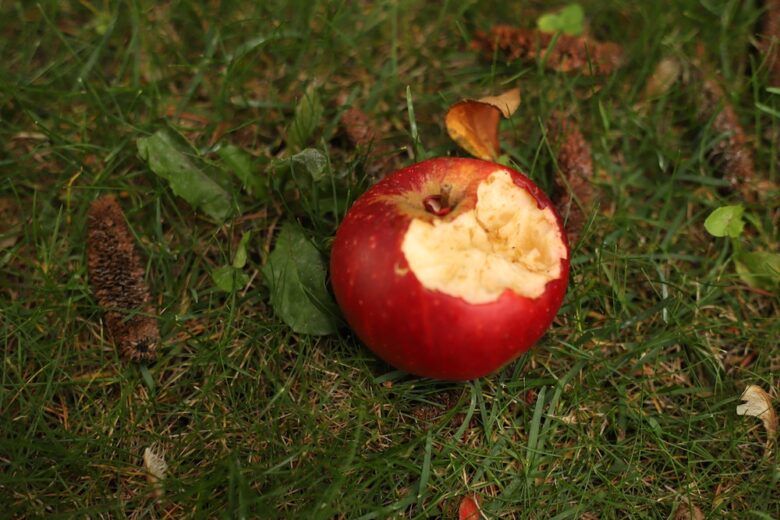Food waste at colleges and strategies to reduce it
Food waste takes place when an edible item goes unconsumed. This could include untouched dishes, unprepared food, or trimmed food.
According to research conducted at the Pollution Prevention Institute, Kansas State University, the United States spends about $218 billion each year transporting and disposing of wasted food (or food that never got consumed).
At the same time, statistics show that 17.4 million U.S. households were food insecure in 2014, with one in seven Americans experiencing food insecurity. That being said, we need to change our response to food waste and ensure we act. The first step is learning how to reduce food waste in college.
Seven ways we can reduce for waste at colleges
So how can we reduce food waste at colleges? Here are seven ideas.
1) Go tray-less
According to research conducted at Rutgers University, schools can see a reduction of 20% in food waste if they decide to go tray-less. The university conducted a trial period enacting this new policy. Within two and a half months, the college saw a cost saving of nearly $300,000.
What did they do? The university removed trays from dining halls and thus, reduced food waste in less than three months. This is one option that could be considered in more colleges. It’s simple, effective, and not challenging to implement.
2) Updated food presentation methods
Another way to reduce food waste is to set the food up differently. Research has shown that when disposing of slices of food separately (e.g., pizza, cake, donuts, etc.), students tend to consume less of it. So, instead of setting up a “pizza bar” for students, colleges should lay out slices individually.
Another good thing would be setting up the buffet in a way that students have continuous access to all the food items at the same time. When food is in close proximity, students will not grab what they don’t need anymore. They’ll only grab what they truly want, which will contribute to decreased food waste.
3) Allow students to carry-out
You could decrease food waste by allowing students to take carry-out. Most colleges don’t allow this as of now when they should. Your university could be selling $5 or $10 reusable containers and allow students to carry out the leftover food. Once they eat the food, they can bring back the container and get their money back. The container can then be reused by another student for the same fee. Universities supporting eco-friendly policies should consider this option.
4) Create a distribution system
It’s always a good idea to have an effective food distribution system put in place. Campuses must implement new strategies to ensure that people living below the poverty line (or suffering from food insecurity) can use the food that hasn’t been touched by students. Instead of throwing good food away, colleges should design new strategies for coping with this issue.
The university’s administration should redesign the school’s food waste plan and implement effective strategies to reduce it. To learn more on how to make a change, you could read essays on food waste written by students and learn how to propose a new project. You can be the change-maker and come up with a new strategy that the university can later adopt.
5) Involve students
Students are essential to the well-being of any university, so teaching your fellow classmates how to reduce waste is essential. As an instructor, you could involve more students in the college meal programs by enacting student taste testing, letting them vote on new menu items, organize cooking demos, and educating them on meal requirements.
You could also create food recovery teams to teach students which items should be composted and which ones can be donated. Education is crucial when our goal is to decrease food waste.
6) Donate
Another option would be donating personally to the local shelters. If your university doesn’t accept your project proposal and/or doesn’t have a food waste reduction program in place, you could do it yourself. Map out an action plan for your leftovers and donate them to those who need them!
Check out the SD Child and Adult Nutrition Services program and see what you have to do to get started on that. You could also lookup MealConnect and learn how to donate responsibly.
7) Increase seat time
As a professor/administrator, you could increase students’ lunch breaks by 25 minutes. Research has shown that by increasing lunch breaks from 20 to 25 minutes, there is a 13% rate of food waste reduction. This will allow students to be more responsible when it comes to food and socialize more at the same time.
We can reduce food waste at college with these ideas
Learning about food waste reduction programs and putting them in place is a great way to act. Make sure that you’re involved in your community and pro-active constantly. Come up with new ideas and teach your school how to put them in place. Have a voice, speak up, say what you want to accomplish, and help this world become a better place for everyone.
Author Bio:
Michael Turner is a freelance writer and ecologist. He works for a popular magazine and writes blogs on marketing and eco-friendly housing. In his free time, Michael rides horses and writes poetry.




